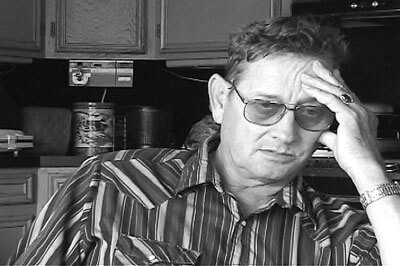A timely documentary aims to hit a moving target, but risks overkill
When Jim de Sève set out to make a documentary about gay marriage three years ago, little did he know the issue would soon erupt onto the front pages of every newspaper in America—and keep on exploding.
His ambitious debut feature, “Tying the Knot,” now premiering at the Tribeca Film Festival, initially focused on two long-term, same-sex couples clearly suffering by not being allowed to legally marry. But de Sève wisely expanded the film to capture the controversy churning in Massachusetts, California, Oregon and beyond. The serendipitous project took on its own will.
If crafting a compelling argument for gay marriage—hoping to drill some sense into stodgy straights—was the filmmaker’s goal, “Tying the Knot” is an eye-opening success. It packs more than enough firepower to win people over—maybe not the bible-thumpers, but certainly the moderates who are mulling over their opinions.
First we meet Mickie, whose life partner, Lois, a Tampa police officer, is murdered in the line of duty a decade after their commitment ceremony. Throughout the film, Mickie, often in tears, wrestles with her lover’s greedy family over Lois’ pension benefits. “This is not a gay issue, this is everyone’s issue,” says Mickie.
Then there’s Sam, who, side-by-side with his companion Earl, built an Oklahoma farm and ran it for 22 years, while raising three sons from a previous marriage. After Earl dies, his distant cousins lay claim to the entire estate, leaving Sam destitute.
From Hawaii, we meet Genora, an illegal alien about to be booted from the country, who fights for the right to marry her longtime lover, Nina. Their case spawned the national Defense of Marriage Act in 1996, which allows one state to disregard a same-sex union legalized elsewhere. We see surviving gay spouses who lost their partners in the terrorist attacks on September 11, 2001. And there’s ample coverage of same-sex matrimony in Holland, which became legal in 2001, and in Canada, where two provinces gave the green light to gay marriage just last year.
De Sève bolsters his argument with the requisite expert commentary, people-on-the-street interviews, snippets of news reports and home videos, and a few choice scenes from old movies.
Even with so much lively content, there is precious new groundbreaking material here for any alert gay viewer with an interest in the news. The most fascinating scene, which appears prior to opening credits, is footage of the Gay Activist Alliance gleefully commandeering the Manhattan Marriage Bureau in 1971. One hippie “renegayde” answers the phone and says to a prospective applicant, “Are they gay? (pause) Sorry, I can’t help you!”
Historian E..J Graff offers a captivating spin on the debate, exposing the “big lie of traditional family values.” She asserts that marriage has always been a fluid institution, first a secular custom based on property and social standing that was adopted as a sacrament by the church much later. Love didn’t become the nucleus of matrimony until the nineteenth century. ”If marriage is made by love, same-sex couples belong,” she says.
Though de Sève has claimed in interviews that “Tying the Knot” brings together diverse viewpoints, “connecting the discourse,” it’s clear his heart lies squarely, passionately, in favor of gay marriage. Not surprisingly, much of the opposition comes across as rabid zealots of the far right. There’s Dr. James Dobson, founder of Focus on the Family, spewing hate on Larry King Live. Naturally, there is footage of Pres. Bush proposing a constitutional amendment to bar gays from ever marrying.
For better or for worse, “Tying the Knot” forgets there is a middle ground in this debate, though unacceptable to many, such as gay civil unions with expanded partner benefits. The documentary turns a blind eye to another, little-acknowledged viewpoint: gays who agree in principle on equal rights, yet are less than enthused to adopt a hetero institution. Another filmmaker might have delivered a more balanced, take on these nuances.
Despite its admirable intent, the film threatens to collapse under the weight of so much material, and it feels a bit slapdash. In his haste to stay current—and make the festival deadline—de Sève has sacrificed style. The pacing can feel sluggish, transitions are clunky, and the sound is often crude even by documentary standards. With any luck, the intolerant conservatives he most desperately needs to reach won’t notice.



































